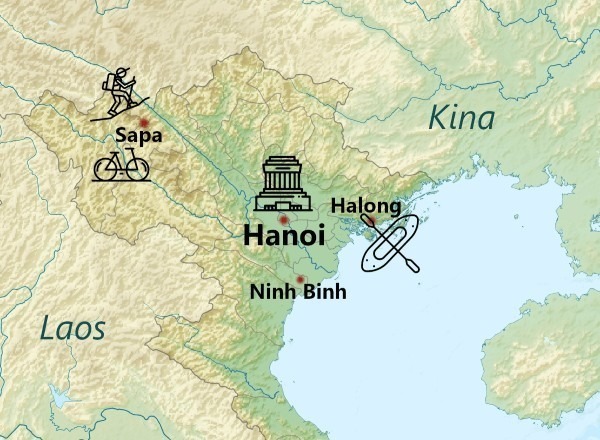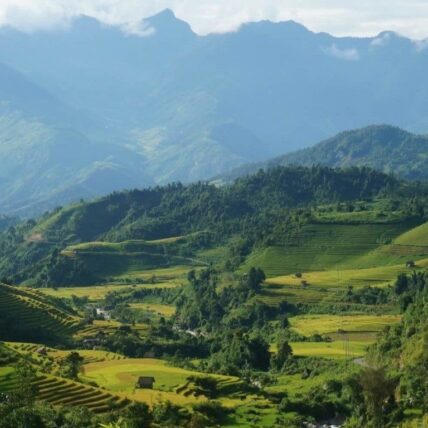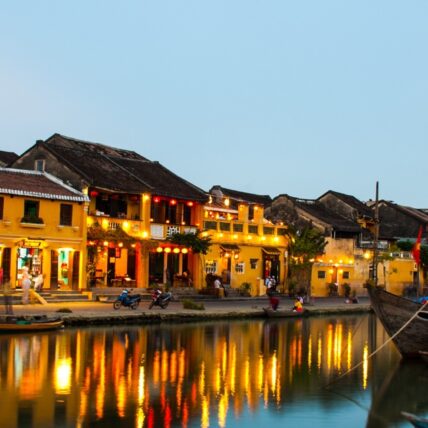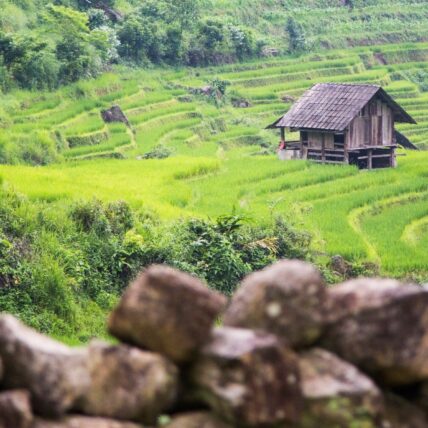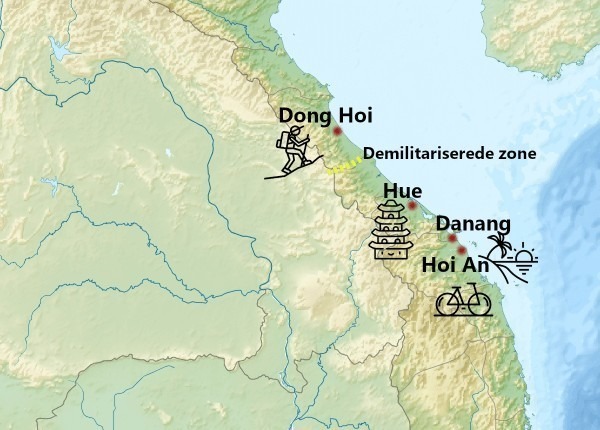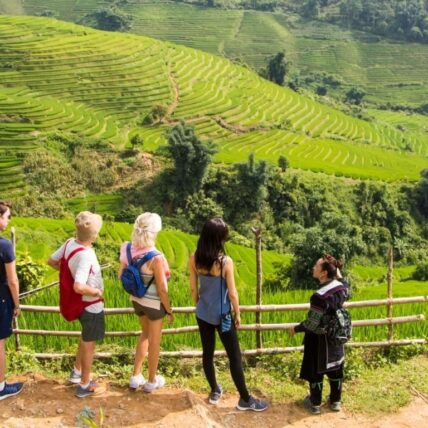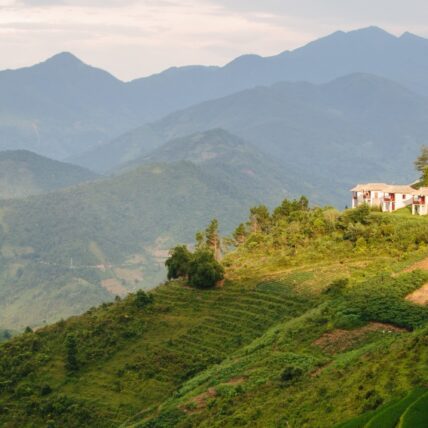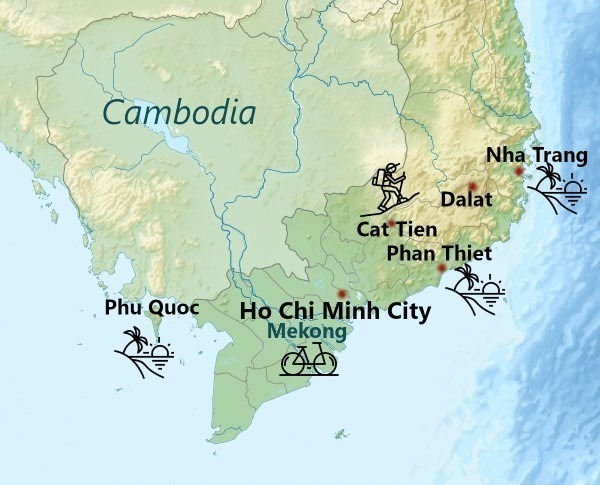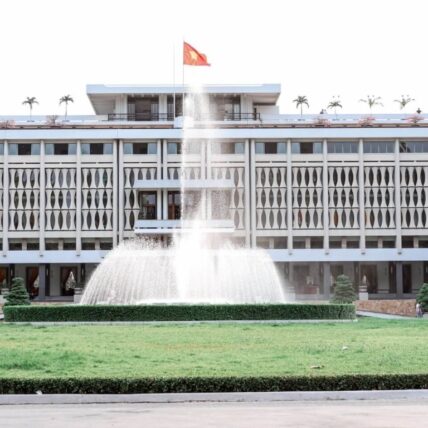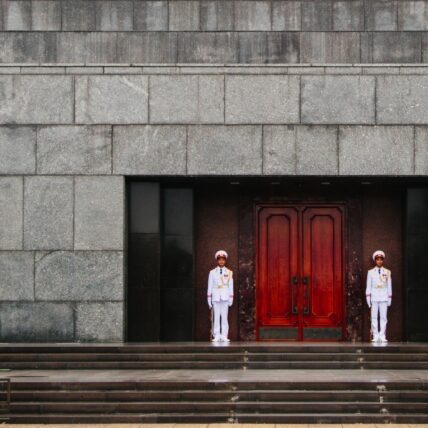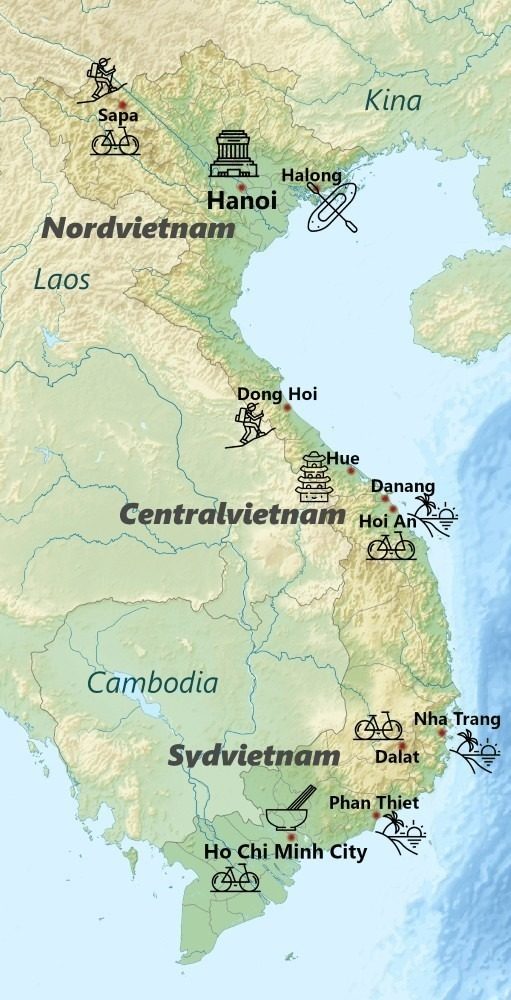
Round trip
Vietnam is a long country, spanning more than 1600 km from south to north.
When we design tailor made travels, we usually divide the contry into 3 regions. These regions is also connected to the climate which you can read about her.
You can see the regions on the map, Northern Vietnam, Central Vietnam and Southern Vietnam.
For travelers visiting Vietnam for up to 2 weeks, we advice to only visit maximum 2 regions. Traveling more than 2 weeks you can still choose to visit only 2 regions, and have good time to dig into this area, but you can also visit all 3 without feeling your are rushing through.
Each region has some unique must-see highlights, but you should as well consider your activity level and whether you want’t the end the trip with plenty of time on the beach.
No matter which region you travel to, you will get close to the local vietnamese people and can taste the well known vietnamese food.
Arriving with an international flight, you can choose to arrive in Ho Chi Minh City, Danang or Hanoi.

